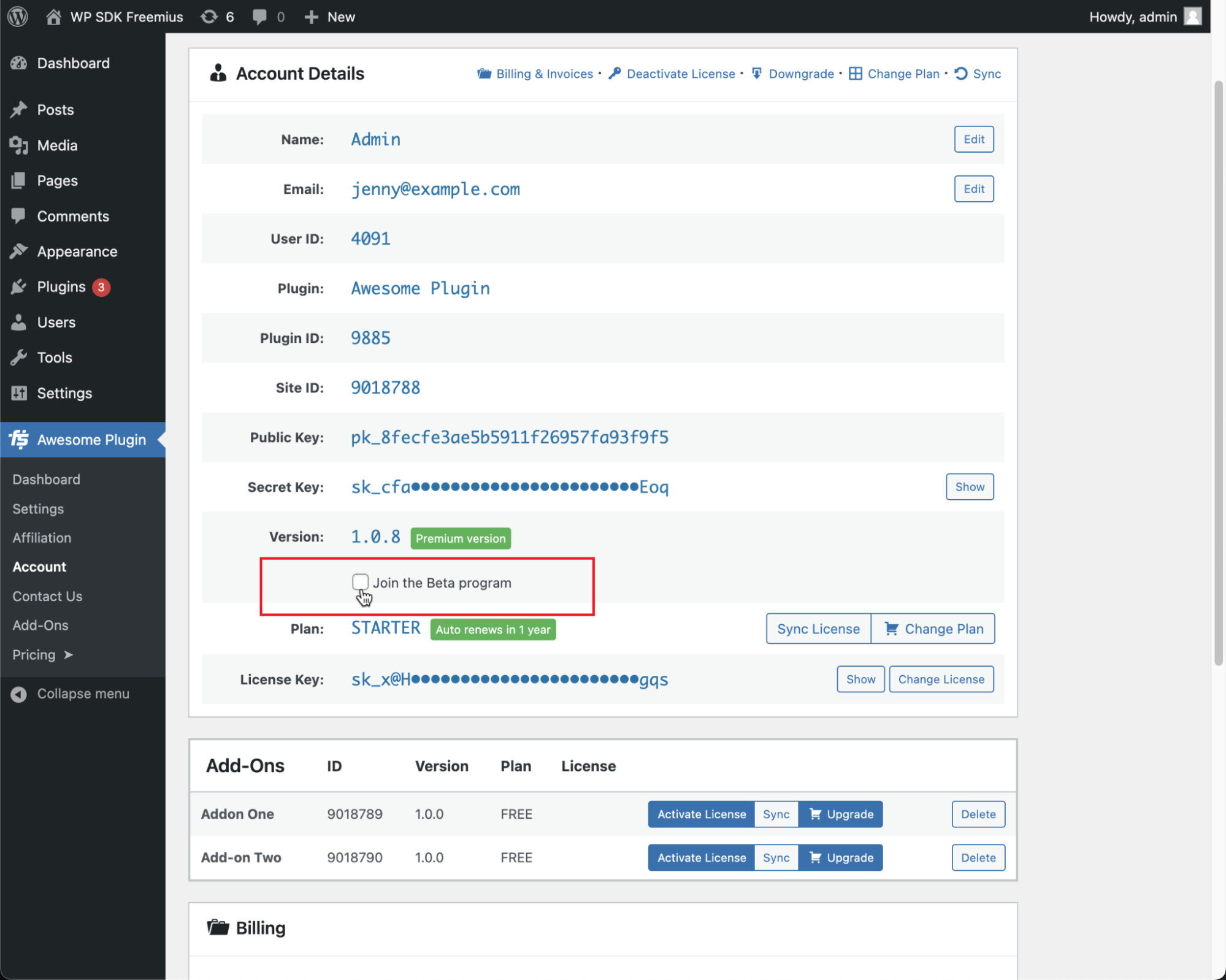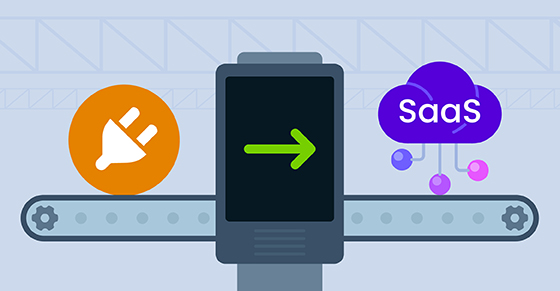Think your software product can’t get any “beta”? 🧐 Think again!
Making the pre-release version of your software available to a select group of users — beta testers — can help you ‘iron out the creases’ and add the missing touches for the best shot at a software product that’s free of bugs and glitches and optimized to suit different users’ needs.
We talked to software professionals about why beta programs are important and how to implement them successfully:
- Vova Feldman, Freemius’ founder and CEO, and
- Evgenii Zakharov, product manager at TelQ, an online SMS testing platform
You’ll find their first-hand tips and insights below.
What Are Beta Programs and Why Are They Effective?
A beta program puts the product in the hands of actual end users who get to test it in real-world conditions across different environments. Examples of end users include:
- Customers
- Potential customers
- External testers
- Employees
- Members from the broader community or ecosystem
There are three types of beta programs:
- Closed beta testing: The developer selects an exclusive group of beta testers to test software features. The limited number of beta testers means feedback is easy to manage, albeit limited in scope.
- Open beta testing: Open beta testing simply means anyone is welcome to partake in the beta program. Also, there’s no cap on the number of beta testers.
- Focused beta testing: Similar to closed beta testing, this format collects feedback about a new feature or functionality by targeting a sub-group of users since they’re the ones who’ll mostly make use of or be affected by it. Additionally, focused beta testing can occur when you patch issues in certain product versions, which will logically only affect users using those versions.
At Freemius, we also relied on the help of beta testers to deploy new features for our product. Vova Feldman, founder and CEO, shares the format he finds most effective:
“From my experience working with WordPress plugin makers, the most effective beta programs are closed and focused rather than open. The key is having a structured approach where beta testers go through a qualification process and make specific commitments.”
Think of beta programs as a collaborative process between software product makers and beta testers: They take the product or new feature(s) for a test drive and suggest where/how they can be refined. You use this iterative process to make improvements.

Benefits of Beta Programs for WordPress and SaaS Developers
Let’s examine the main benefits of beta programs:
An Early Feedback Loop
During beta programs, beta testers actively engage with the software. This allows them to:
- Identify and report bugs, glitches, or usability issues that weren’t picked up during internal testing.
- Provide input about their experiences, preferences, and expectations for the final release.
Evgenii shares that the early feedback from beta customers helped his team align priorities with clients’ operations.
“As a startup operating in a narrow and highly specialized telecom industry and with limited resources for testing real-life scenarios, we rely heavily on close connections with our clients to ensure our solutions address their challenges.
We learned that in telecom, network coverage and test result reliability often outweigh user experience. This insight shifted our focus toward improving the robustness of our testing capabilities, particularly in challenging network conditions.”
Beta programs enhance product quality through iterative refinement based on user input. What does that mean?
Ideally, the beta program software testing process should involve a diverse group of beta testers running different hardware configurations, operating systems, and software setups. This will provide an array of perspectives based on a variety of usage scenarios.
If insights are derived from different testing environments, they help developers figure out how to optimize aspects like interface design, feature functionality, and overall UX.
Different insights aid in resolving compatibility issues to ensure the product works seamlessly across different environments.
For TelQ, beta testing in diverse environments also revealed device-specific issues, such as compatibility problems with certain phone brands or models, which internal tests couldn’t identify due to resource constraints.
“By excluding problematic devices, we’ve been able to provide more reliable and consistent results for our customers,” Evgenii says.
For Evgenii and his team, being a startup, this approach is critical for maintaining agility, responsiveness, and alignment with the unique needs of their industry. “To maintain an effective feedback loop, our account managers were in constant communication with clients, gathering insights, addressing concerns, and relaying actionable feedback to our development team.”
Building Customer Loyalty
Beta programs actively involve beta testers in the development process, which is useful for the following reasons:
- It ‘demos’ the product to potential future customers.
- It demonstrates a commitment to existing customers because it communicates consideration for different perspectives and preferences.
- It also instills a sense of ownership in existing customers: Being made to feel that their contributions are an integral part of the product’s refinement and its success is a surefire way to breed loyalty.
Vova explains that your beta users have the potential to become your loudest advocates. “In the early stages of a new product, your early adopters essentially become your beta program.
These users naturally develop into product ambassadors because you’re building personal relationships with them and actively incorporating their feedback into the product’s development. When you’re small and agile, you can actually implement their suggestions quickly, which creates a powerful loyalty loop,” he concludes, going on to share an interesting story about commitment:
“Sometimes, users will go above and beyond what you’d expect from beta testing. We had one developer who was so invested in improving our earnings dashboard that he actually designed a complete revamp of the page, creating detailed mockups of his vision.”
“We ended up implementing his design, which solved a complex visualization challenge we’d been struggling with. This level of engagement shows how beta testers can become true partners in product development!”
Evgenii’s team has also experienced strengthened customer relationships thanks to their beta testing programs, especially due to the nature of their small, unique niche.
“Offering 100 free tests during the beta phase provided an immediate incentive, but building trust and fostering collaboration were the real drivers of loyalty.”
Especially when you’re able to meet these people in person!
“Meeting beta testers at the WWC conference in Madrid allowed us to gather nuanced feedback and establish personal connections. These interactions made customers feel valued as co-creators of the product. Many participants became strong advocates for our platform, recommending it within their networks and continuing as long-term users,” explains Evgenii.
A Sense of Community
Remember, beta programs don’t have to be limited to a series of one-way feedback loops between individual testers and the developer.
They can also take the form of an online community — like a Slack workspace, for example — where beta testers share their experiences and insights with one another.
This additional avenue of collaboration will most certainly yield additional valuable feedback for developers. But more than that, it can also create a kind of ‘product camaraderie’ where beta testers form a lasting relationship with the software product and the community that’s gathered around it.
This is especially true if you take time to get to know your testers on a more personal level, says Vova.
“Their background, work style, and daily challenges — knowing all this about your beta testers makes a tremendous difference to the quality of feedback you receive. Understanding the full context of who they are and how they work helps you interpret and prioritize their input more effectively.”
Beta programs clearly have the potential to be one of your most effective software testing strategies when it comes to improving products. Assuming you’re intrigued, let’s examine how to plan one, set it up, and deploy it to willing and able beta testers.
Subscribe and grab a free copy to start Mastering SEO on the WordPress.org Repository
Make the WordPress.org search algorithm work for you with actionable tips to rank your plugin higher.

Strategic Planning for Deploying Beta Programs
A successful beta program is more than just “here’s my product, play around with it!”. It should involve careful planning and a clear value proposition and requirements for the testers:
“The most successful beta programs require mutual commitment,” Vova confirms. “While beta testers might get access to the product for free, they need to commit to specific deliverables, whether it’s feedback about particular features or regular testing sessions. This structured approach ensures that both parties get value from the program.”
Here are a few steps to think about when structuring your beta program:
Setting Clear Objectives
Before deploying a beta program, identifying specific goals for what you want to get out of the software testing phase is crucial.
Sure, you’ll (probably) receive a mixed bag of differing — yet equally important — feedback from beta testers. But at the same time, you need to understand how testing efforts at this stage will align with the broader development objectives.
Whether the main focus is identifying and fixing bugs or glitches, assessing UX, or testing features, a clear understanding of your main priorities will ensure a guiding light during beta program rollout, feedback collection, and revision.
In tandem with goal-setting, establishing key performance indicators (KPIs) provides a measurable framework for evaluating the success of the beta program. These could include:
- The number of bugs identified (and resolved)
- Beta tester engagement levels with specific features
- Overall beta tester satisfaction ratings
Alternatively, if you feel that setting strict goals/KPIs will limit the learnings from the beta program, you can provide a ‘blank form’ for beta testers to list their opinions.
Should you pick up on a common thread that doesn’t align with your specific goals, it’s a clear sign that you need to revise your priorities and focus on areas you may have neglected.
That said, it’s also important to maintain a certain level of flexibility and adapt to the feedback you receive — sometimes, it will include insights you haven’t predicted.
“We aim to balance pursuing predefined goals and adapting to customer feedback. While our primary objective is to lead innovation in telecom testing, we remain receptive to customer needs,” says Evgenii.
“For example, a beta tester once suggested a feature that wasn’t on our roadmap but aligned with market demand. We reprioritized to include it. However, we don’t implement every suggestion. Based on our expertise in telecom testing, we sometimes anticipate customer needs before they reach out to us for solutions.”
Crafting an Effective Communication Plan
It may seem obvious, but creating hype and encouraging users to participate in your beta program is crucial for its success.
The benefits extend beyond gaining participants; it also creates a sense of transparency about your product and operations.
Encouraging engagement may even entice potential customers to investigate your offering.
Here are a few pointers for effective communication before, during, and after the beta program:
- When reaching out to potential beta testers via social media or email (more on this soon), ensure your message is concise and to the point. Overexplaining your beta program will be offputting to potential testers. A sentence or two with a link to “find out more” should do the trick.
- Be sure to maintain communication during the beta testing phase itself. Make it easy for beta testers to reach out to you if anything is unclear, and keep everyone up to speed about the beta program’s progress.
- It’s good etiquette to communicate updates and the specific feedback you’ve actioned after the beta program. Sending a general email/post is perfectly fine (not to mention timesaving). However, making an effort to reach out to individual testers who’ve provided particularly useful feedback is bound to leave a lasting impression.
Generating awareness and attracting potential beta testers is a challenge all its own — they’ll be using an unfinished, potentially buggy product, after all 😉 Let’s take a look at how to find and onboard beta program testers.
How to Get Beta Testers for Your Beta Program
It’s not as simple as putting up posters on lamp poles/phoning your friends, I’m afraid. After creating a well-crafted message that communicates the intentions of your beta program, you’ll need to do the hard yards and build your candidate pool from scratch.
Luckily, there are some solid strategies to draw beta program testers organically:
- Posting on Facebook groups and other social media channels
- Emailing users and customers
- Contacting your professional network
There will be instances when you’ll want to target a specific group of users for testing. For example:
- If you’re revamping a specific feature and your main concern is how it will impact the users who’ll mostly use it, it’d make sense to only target that sub-group to beta test.
- If you’re patching an issue related to a specific WordPress version, it’s logical to target users who are using this version instead of the entire user base.
Vova confirms this: “It’s not just about checking boxes — it’s about finding people whose expertise aligns with what you’re testing. For instance, if you’re testing checkout functionality, you want beta testers with strong e-commerce and UI experience.”
Evgenii agrees that targeted choices are better than casting a wide net. “We targeted highly responsive participants (our most reliable partners) with a vested interest in CLI testing. These were often customers with high call volumes or a need for accurate route verification, making them motivated to provide meaningful feedback,” he explains.
However, the truth is that many (likely most) product makers don’t have the privilege of cherry-picking and pruning to get the perfect pool of beta testers. You will probably have to enlist any willing volunteer — regardless of how much they contribute to diversity — but don’t let that deter you.
Try working as closely as possible with the beta testers you do manage to enlist to understand their circumstances and how this affects their insights. From there, figure out how to translate their feedback into updates that will allow your product to perform at its peak in the hands of your target audience.

If you’re launching a new product or don’t necessarily care if the testers will be a subset of your actual users, you can leverage beta testing platforms that offer pre-screened beta tester pools you can choose from (instead of recruiting testers yourself).
There are costs involved, so you’d need to have a budget to choose this option. Here are a few examples:
Another point worth noting here is that it’s important to make it as easy as possible for beta testers to join your beta program. For WordPress products, you can include an option to join the beta program directly from your product settings in the WP Admin.
With Freemius, developers don’t have to bother with this as we do it for them 😇 Once a user installs a plugin or a theme with the Freemius SDK, it adds an Account section in the WP Admin. From there, the user simply needs to check the Join the Beta program option.

Checking the box will prompt the user with a disclaimer, making it clear beta versions can break and, therefore, should not be installed on production sites.
Getting people to join beta programs is one thing, but you’ll also need effective methods for distributing beta versions to your testers.
How to Distribute Beta Versions to Beta Program Participants
There are various ways to distribute new beta program versions to your dedicated pool of testers:
- Emails
- GitHub
- A closed beta program portal on your website
- Social media (for example, a closed Facebook group dedicated to your beta program testers)
- Integrating the distribution of beta versions with ongoing software updates
With Freemius, developers only need to upload the ZIP file of a beta version and flag it as a Beta release without having to rely on marketing emails and other channels.
And, in turn, users automatically receive the beta version, ready to install with a click of a button on the sites where they opted in for the developer’s beta program.

Believe it or not, it gets even cooler. Developers can monitor the sites and users testing the beta version in the Freemius dashboard.
Now for a word to the wise: beta programs can end up testing more than your software product. Taking note of some common pitfalls will help ensure smooth sailing.
Overcoming Challenges in Beta Programs
Most challenges in beta programs arise from insufficient communication. If participants aren’t made aware of objectives, expectations, or the feedback submission process, it can lead to confusion and make for an ineffective testing phase.
To avoid this, you need to ensure that participants are well-informed about their role in the beta program. Misunderstandings can also be mitigated with effective documentation.
But arguably, the biggest challenge is keeping your ego in check during beta testing.
Negative feedback is an inevitable aspect of the process. Still, you should regard it as a valuable opportunity for improvement rather than a setback:
- Develop a proactive strategy to objectively break down the beta tester’s criticisms, consider and/or test them, and document the process.
- Communicate the documentation to the beta tester to determine if you correctly understood their concerns. If you believe their criticisms aren’t valid, explain why you will not be including updates to address them. This open-ended communication shows the beta tester that you value their input which is likely to strengthen their relationship with your product.
“Suggestions for improvements and new features are quite common,” says Evgenii, explaining that his team always shares the rationale behind decisions not to act on an idea — to remain transparent.
“We prioritize these based on their potential market impact and alignment with our vision. And the openness builds trust and ensures feedback remains constructive, fostering a collaborative atmosphere even when requests aren’t fulfilled.”
Keep Getting Beta and Beta
The great thing about beta programs is that there are challenges, but no great risks.
The practice is fundamentally rooted in continual improvement and upkeep, and adopting it will enhance your software products, customer relationships, development skills, and your ability to handle and channel negative feedback into positive outcomes.
Want to explore the topic of user feedback even further? Find out whether you should incentivize feedback and how to properly collect it in this blog post.








